I've recently taken the plunge and switched from a Canon 80D (APS-C) to the Sony A7R III (Full Frame Mirrorless). There were a couple of reasons behind the switch (which I'll probably unpack in a future post), but when I'd decided to move there were a number of extra features I was excited to try out.
One of these was the promise of a might higher dynamic range - this is primarily down to the fact that the sensor is larger on Full Frame, but it's slightly more naunced. As well as the larger surface area, the size of the pixels (Pixel Pitch) is important. I'll dig into the numbers on this towards the end.
But first, some pictures!
Putting it to the test
When the Sony A7R III arrived, I headed out to the Peak District to familiarise myself with the controls. It was a largely cloudy afternoon, but there were some occasional bursts of light. One of these came just as I set the camera up, and this was the result:
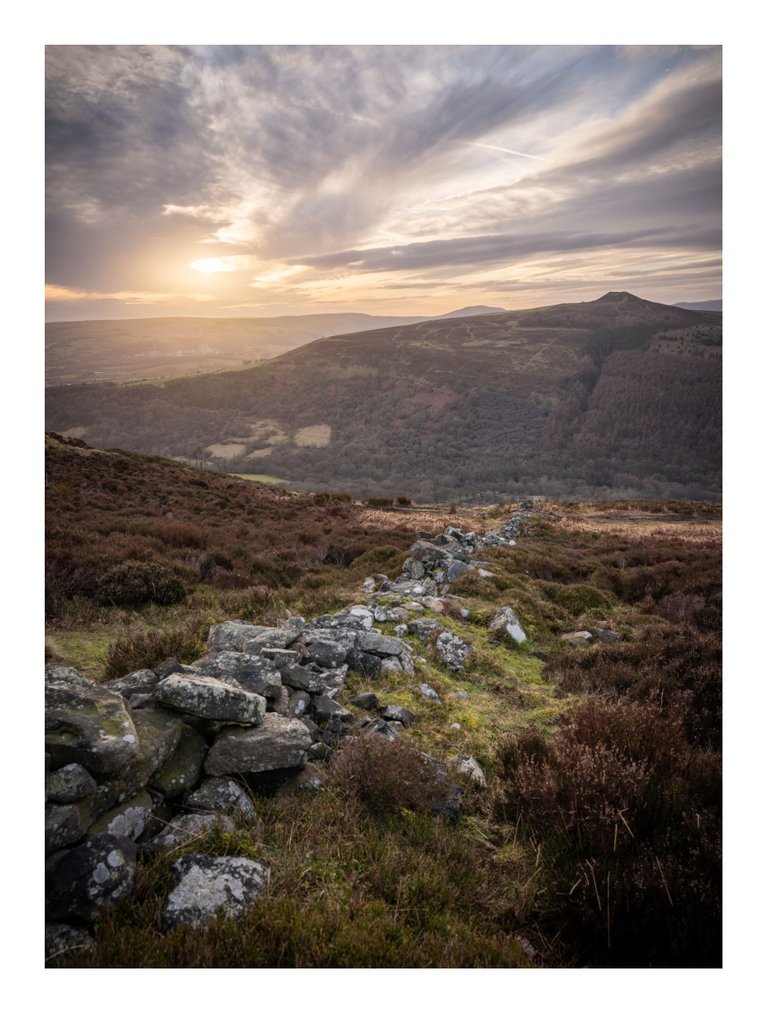
As I was rushing slightly, I followed the same processes I normally would on the Canon 80D:
- Manually bracketed exposures, taken at 1-stop intervals
- Use of a Formatt Hitech Firecrest 3-Stop graduated filter to darken the sky
As a result, this image required four exposures to capture the range of contrast in the scene.
A few days later, I thought I would look more closely at the RAW files. I chose one of the exposures from the set, the one where the highlights were just below being blown out, but with very deep shadows:
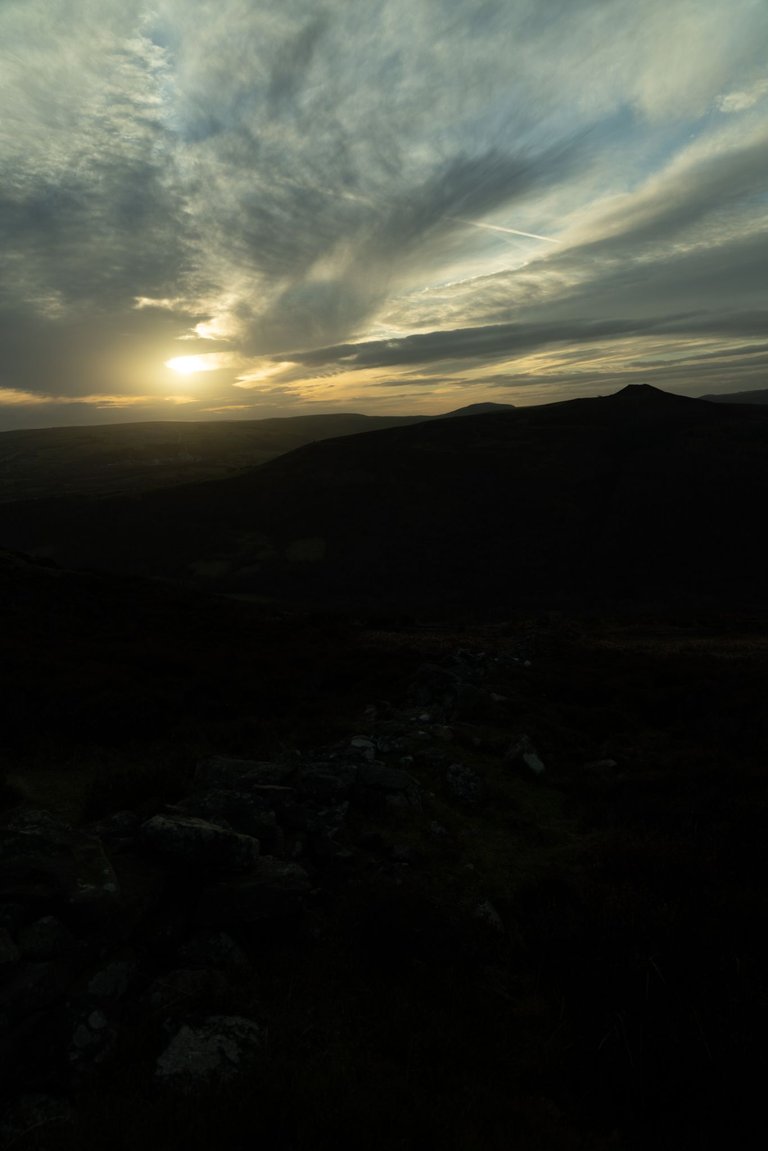
I then applied the processing I'd used on the bracketed set - essentially lifting the shadows and dropping the highlights. After some balancing of the levels to match, this side-by-side image compares the two resulting images (Bracket on the left, single-exposure on the right)
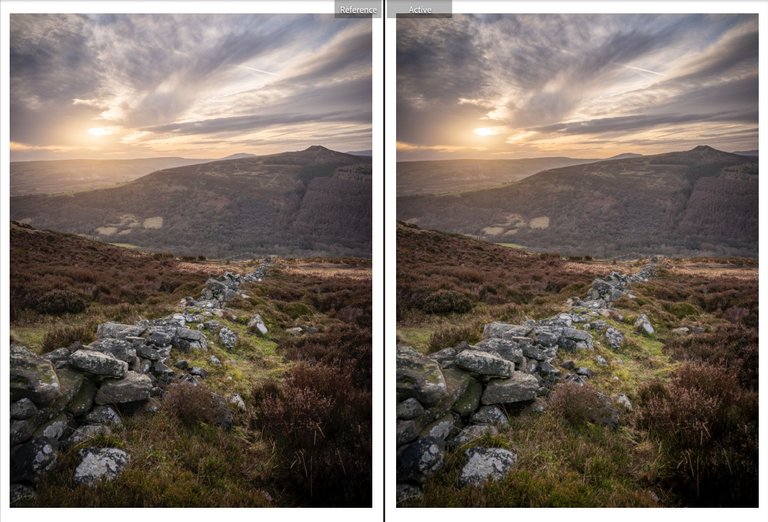
I was immediately blown away by how similar the two came out. There's some slight difference around the sun, but it was possible to get very comparable results.
Obviously, though, this is a zoomed-out view. So, the next step was to do some pixel-peeping!

At 100% zoom, the images still look very similar - a slight amount more noise on the single image (right) - please ignore the soft focus... in my haste, the aperture was set incorrectly!
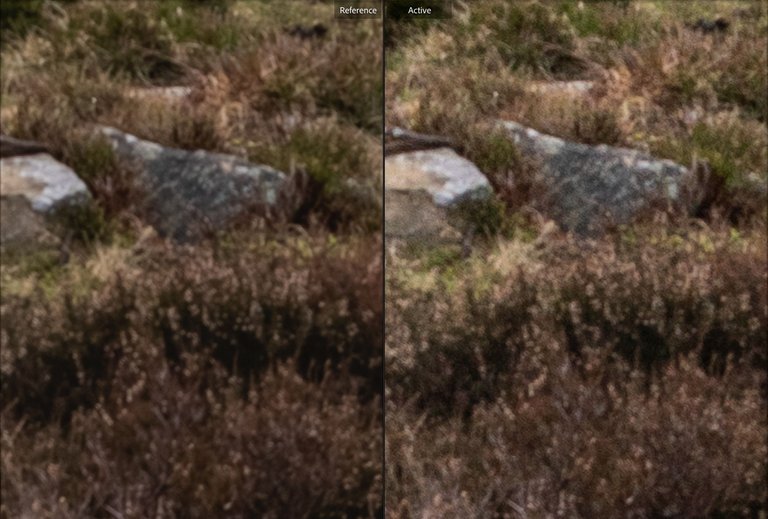
At 400% zoom the noise is more apparent, but even so, still quite light.
I found this hugely impressive to say the least - I was dumbfounded by the capability of the sensor.
What about the 80D?
It's only fair to run a comparison with the Canon 80D to show what I was used to. Sadly, I didn't use both cameras on that outing, so it is hard to do this scientifically. However, on a previous trip I had photographed The Roaches in similar conditions (dull foreground, sun behind clouds, hazy glow in the air):

Again, this ended up being a 4-shot bracketed exposure, taken with a Formatt Hitech 3-Stop Grad filter, so I did the same as for the Sony images - I chose the brightest exposure where the highlights are not blown out:
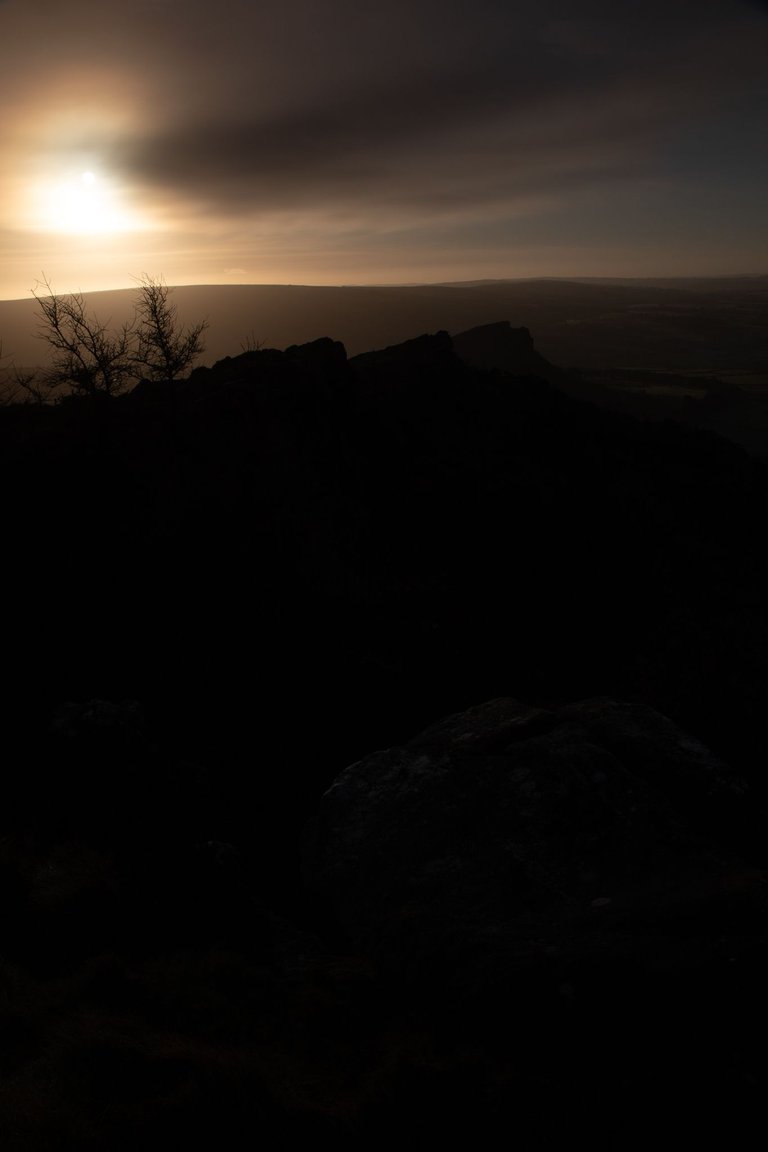
I then applied the processing used on the bracketed version and put them side-by-side
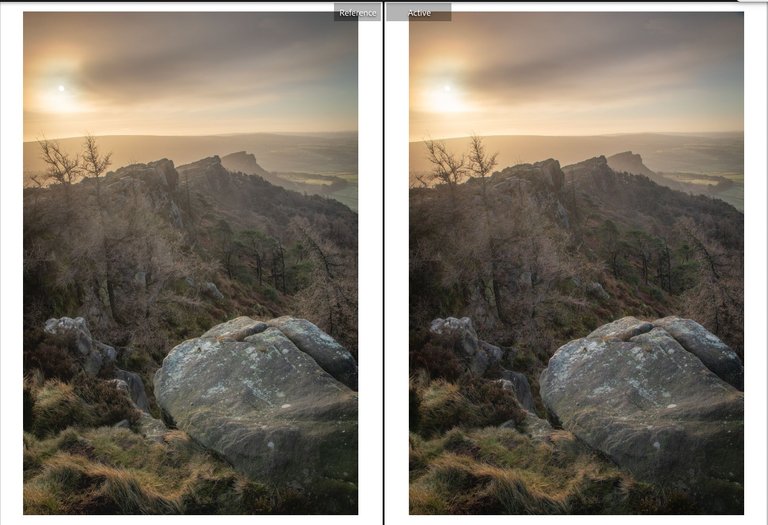
At web-resolution, this still looks good, so the pixel-peeping views are where we'll start to see the real difference.

Firstly, zooming to 100%, and the sharp noise is already clearly visible in the right-hand image. Taking it to 300% (to account for different pixel resolutions) shows a very high level of image degradation. If I wished to print this version, I expect that loss of quality would be very apparent indeed.
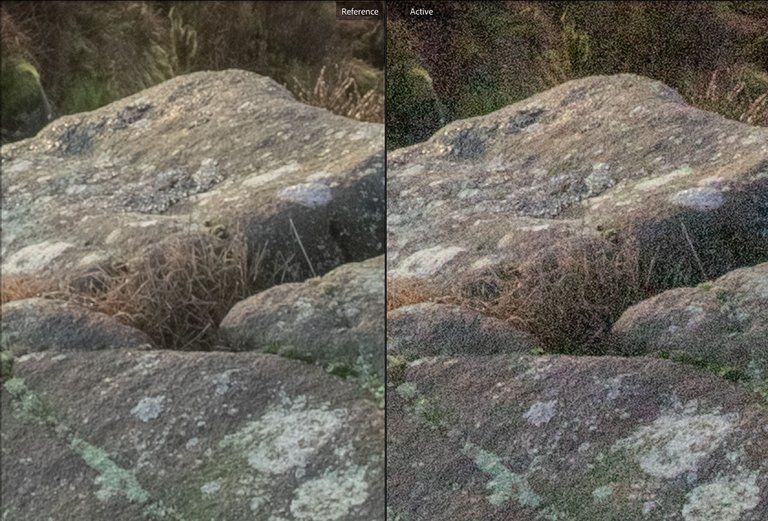
The Science Bit...
You can think of sensor pixels as tiny buckets which collect light, filling up as the photons land in them. If the sensor is made up of small buckets, they will fill up more quickly than if they were larger. When the 'buckets' in bright parts of the image are full to overflowing, the darker regions will have not collected much at all.
So, larger buckets mean that the dark areas can collect more light before the bright parts overflow, allowing for more detail to be captured in the shadows before the highlights blow out.
However, having larger buckets means there will be fewer of them on the sensor. It's a trade off between resolution (the number of buckets) and dynamic range (the size of the buckets).
Moving from a crop sensor to Full Frame meant I was (hopefully) able to benefit from a sensor with higher resolution while also increasing the size of the pixels. To compare the actual stats:
| Camera | Sensor Size | Resolution | Pixel Pitch (microns) | Pixel Area |
|---|---|---|---|---|
| Canon 80D | 22.3 x 14.9mm | 24.2MP (6000 x 4000px) | 3.7µm | 13.69µm2 |
| Sony A7R III | 35.9 x 24mm | 42.2MP (7952 x 5304) | 4.51µm | 20.34µm2 |
The Pixel Pitch is the distance between the centre of neighbouring pixels, essentially the width of each one. If we square that figure, we get an idea of the light-collecting area of each one - so the table above suggests that each A7RIII pixel can capture 1.5 times the light of the 80D, allowing for a greatly improved dynamic range.
Incidentally, the non-R version (Sony A7 III) has a lower resolution (24MP), but the same sensor size. Its pixel pitch is 5.91µm, giving an area of 34µm2 - as a result, the light-gathering capability of this model would be higher than either of the above, making it better again in very low light conditions, as a trade off against resolution. There could be an argument for choosing that model for astro landscape work.
In Conclusion
It's quite clear to me that the Sony A7R III has some amazing capabilities when it comes to the dynamic range the sensor can handle, and also the aesthetic quality of the noise that is produced when lifting the shadows.
On the one hand, with bracketing and careful thought when shooting, the Canon 80D is an extremely capable camera for its size and cost. I've had great results with it once I got into a way of working.
But seeing the huge difference on the Sony A7R III, and realising that more images might be achievable in a single shot is a game changer. I will probably still shot brackets for a good while at least - mainly as an insurance policy! - but it increases the possibility of a usable hand-held shot too.
I hope you've found these examples useful despite the fact that, clearly, this is a single (anecdotal) test, and I should so something more careful!


